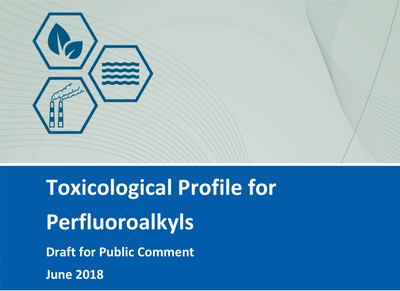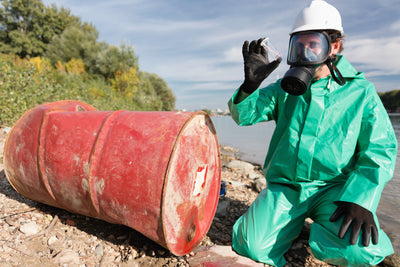Using a reusable water bottle and filling it up with filtered tap water can reduce your carbon footprint and save you money.
Water Quality InformationWritten By Actual Experts
RSSWhy Home Water Filters Are Better For The Environment:

Trump's "Dirty Water Rule" to be Revised

Emily Driehaus | Science Communication Intern
The Environmental Protection Agency (EPA) announced that it will revise regulations from the Trump administration that limit protections for certain bodies of water. The rule, commonly referred to as WOTUS, has been amended several times over various years.
The EPA and the Army said in a statement that the rule “is leading to significant environmental degradation.” Acting Assistant Secretary of the Army for Civil Works Jaime Pinkham also said that current regulations established under the Trump administration have led to a drop of 25 percentage points in decisions that would give bodies of water protections under the Clean Water Act.
The Navigable Waters Protection Rule was established on April 21, 2020 after the Trump administration repealed an Obama-era rule that recognized smaller bodies of water as “waters of the United States” and gave them protections if they contributed to a larger water source. Protecting these small water sources was meant to prevent pollution from flowing into larger bodies of water, including drinking water resources.
The Trump administration’s rule updated the definition of “waters of the United States” to exclude waters such as wetlands and streams from receiving protections under the Clean Water Act.
The exclusion of certain bodies of water under the Navigable Waters Protection Rule is most significant in arid states like Arizona and New Mexico. Of the 1,500 streams in these two states, almost every one is excluded from protections.
According to The Hill, EPA Administrator Michael Regan said that the agency will not “return verbatim” to the regulations from the Obama administration in a recent congressional hearing.
A statement released by the EPA said that the new regulations will be guided by the Clean Water Act, the effects of climate change on water resources, the practicality of implementation, and input from the agricultural community, tribal and local governments, environmental groups, and communities with concerns about environmental justice.
Our Take
We are very encouraged by the Biden administration and EPA’s step toward fixing water regulations. Water pollution can expose the public to harmful chemicals and substances through their drinking water, and we hope the new revisions to the Navigable Waters Protection Rule will recognize the importance of small bodies of water to the environment and our drinking water systems and protect them from pollution.
Other Articles We Think You Might Enjoy:Water Infrastructure and Cybersecurity
The American Jobs Plan To Allocate $111 Billion To Water Infrastructure Improvements
New Legislation Aims to Tackle Coal Ash Pollution
Breaking: ATSDR Releases Toxicological Profile for Perfluoroalkyl Substances

Analies Dyjak | Policy Nerd
The Agency for Toxic Substances and Disease Registry (ATSDR) just released a draft toxicological profile for Perfluoroalkyl Substances such as PFOA and PFOS. This category of emerging contaminants have flooded news headlines this past year, even though they've been persistent in the environment since the 1950’s. PFOA and PFOS are ingredients used in the production of non-stick materials like Scotchgaurd, Teflon, and firefighting foam. The risk to human health is "unknown" but exposure has been linked to various types of cancer, developmental issues, and preeclampsia in laboratory animals.
June 20, 2018 ATSDR Toxicological Profile for Perfluoroalkyls
Municipalities across the country have been demanding that government agencies expedite toxicological reports for this dangerous class of contaminants. Wilmington, North Carolina and several Michigan municipalities are just some of the locations that have been severely impacted by perfluoroalkyl contamination. Unfortunately, GenX, the most popular PFAS was not included in this particular toxicity study. This toxicological profile included provisional Minimal Risk Levels for both PFOA and PFOS. A Minimal Risk Level (MRL) is a non-enforceable standard, similar to an EPA health advisory level. The Agency for Toxic Substances and Disease Registry recommended reducing EPA’s non-enforceable health advisory from 70 parts per trillion to 20 parts per trillion for drinking water. This means municipalities across the country may be in exceedance with this new health recommendation, so people should stay current with public notices in their area.
Are Perfluoroalkyls Now Regulated?
It’s important to note that this toxicity study does not mean that PFOA and PFOS contaminants are now regulated. The Agency for Toxic Substances and Disease Registry can only make recommendations and provide scientific data regarding this class of contaminants. It’s now up to regulatory agencies to comb through these data and make decisions to ensure that public health is protected. The regulatory process in this country, especially for toxic substances, can take upwards of decades. A regulation proposed by EPA or CDC could take years to draft and even longer before it’s enforceable.
Our Water Nerds are working around the clock to help make sense of this 852 page document. We’ll be reviewing the document and providing information on our Youtube, Facebook and Twitter accounts. Make sure to subscribe and follow Water Nerd TV on Facebook to stay up to date!
Other Articles We Think You Might Enjoy:Everything You Need To Know About PFAS, PFOA, and PFOS
GenX Contamination in North Carolina
Recap of The 2018 PFAS Summit
Volatile Organic Compounds (VOCs) In Drinking Water

Hydroviv's Science Team
Most people are aware of Volatile Organic Chemicals (VOCs) because they are frequently discussed when selecting paint for their home, but many people don't realize that they can contaminate drinking water supplies. This article provides a broad overview of VOCs as it pertains to water, and also gives practical advice on how to protect against them if a water supply becomes contaminated.
What Are Volatile Organic Chemicals (VOCs)?
By definition, VOCs are a class of chemicals that vaporize easily at normal air temperatures. VOCs are commonly found in household and industrial products including gasoline, solvents, cleaners and degreasers, paints, inks and dyes, and pesticides. For example, gasoline is a mixture of VOCs including benzene, toluene, and other hydrocarbons, which gives gasoline it’s familiar odor.
Can VOCs Contaminate Drinking Water?
Absolutely. In fact, the US Geological Survey (USGS) found in a recent study that VOCs are present in one-fifth of the nation's water supplies. For example, benzene, (a constituent of gasoline) commonly enters groundwater when it spills or leaks out of underground fuel tanks. Other examples of commonly detected VOCs in drinking water include dichloromethane (methylene chloride), an industrial solvent; trichloroethylene, used in septic system cleaners; and tetrachloroethylene (perchloroethylene), used in the dry-cleaning industry.
How Are VOCs In Drinking Water Regulated By EPA?
Because It would be impractical and costly for municipalities to test for every potential chemical that can be categorized as a VOC, EPA regulates a subset of chemicals that commonly contaminate water supplies. For example, benzene, one rather common constituent, is regulated with a maximum contaminant level set at 0.005 milligrams per liter (parts per million) and a goal of zero in drinking water. Water analysis can be requested if there is reason to suspect the presence of a specific VOC.
Private wells are not covered by EPA's regulations and testing is typically optional. While VOCs can be detected by odor at high concentrations, laboratory analysis is the only way to measure VOCs in drinking water at the regulatory limits. We highly recommend that all people who get water from private wells get their water tested by an accredited laboratory.
How To Remove VOCs From Drinking Water
High quality water filters are the only effective way to remove Volatile Organic Compounds in water. These water filter companies (including Hydroviv) test their filters against chemicals that are selected to represent a wide range of VOCs that commonly contaminate water supplies. The NSF Standard 53 protocol for VOC reduction requires manufacturers to test against the chemicals listed in the table below:
| alachlor | atrazine | benzene | carbofuran |
| carbon tetrachloride | chlorobenzene | chloropicrin | dibromochloropropane |
| o-dichlorobenzene | p-dichlorobenzene | 1,2-dichloroethane | 1,1-dichloro-ethylene |
| cis-1,2-dichloroethylene | trans-1,2-dichloroethylene | 1,2-dichloro-propane | cis-1,3-dichloropropylene |
| dinoseb | endrin | ethylbenzene | ethylene dibromide |
| haloacetonitriles | haloketones | heptachlor epoxide | hexachlorobutadiene |
| hexachlorocyclo-pentadiene | lindane | methoxychlor | pentachlorophenol |
| simazine | 1,1,2,2-tetrachloroethane | tetrachloro-ethylene | toluene |
| 2,4,5-TP | tribromo-acetic acid | 1,2,4-trichlorobenzene | 1,1,1-trichloroethane |
| 1,1,2-trichloroethane | trichloroethylene (TCE) | trihalomethanes (THMs) | xylenes |
Table 1: List of chemicals that are part of the NSF 53 Standard Test For VOC Reduction
As always, we encourage you to reach out to our “Help No Matter What” technical support through live chat or email (support@hydroviv.com). Our team will provide science-backed advice on water quality and water filtration, even if you have no intention of buying a Hydroviv water filter.
Other Articles We Think You'll Enjoy5 Things to Know About Chromium 6 In Drinking Water
Why You Should Throw Out Your TDS Meter
Lead and Chromium 6 problems In Chicago's Drinking Water





